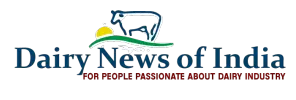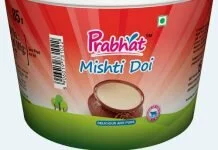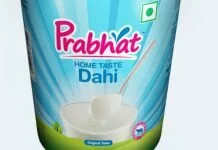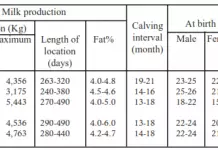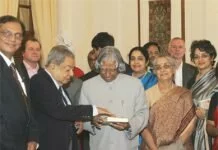Milk- The Soul of Indian Civilisation
Source : bmvyas.blogspot.in
India is an ancient civilisation that is constantly evolving, now over thousands of years. The biggest asset of this nation is the wisdom of its people which has been shaped and transferred from one generation to next – from parents to their children and from guru’s to their pupils.
With the recent advent of newer technologies, this process of sharing information and the wealth of knowledge has tremendously sped up. Thanks to all this, the cultural heritage, which at one point was considered, lost, is coming back like a comet in space. The evidence is not far – look at the spread of yoga, natural remedies, healthy eating etc. However, the ignorance piled through a thousand years of slavery has left huge mass of population in abject poverty and ignorance – who are yet to see any benefits from the wealth of knowledge and wisdom that the nation once heralded.
India was a land of milk and honey, but in the world of dairying, the urbanisation around Mumbai, Delhi, Kolkata, and Chennai from 18th century onward led to shifting of the best pedigree buffalos and cows to these places with their calves to meet urban demand for milk. These high pedigree animals were sold for meat and skin, once they were exploited for a few seasons. Obviously the productivity of residual stock fell rapidly and ultimately over a period of a century and half we are left with poor pedigree animals. This cycle needed to be reversed and reversed quickly. Operation flood was a strategic plan that envisaged marketing as a driving force to make investments in procurement and processing structures viable. It also envisaged the creation of input structures as the dairy business got organised. Under Operation Flood phase 1 to 3 a sum of about Rs.2000 crores was invested from 1979-94 to provide various input services such as artificial insemination, cross breeding, feed mills and farmer’s education. However, in a new liberalised environment from 1992-2012 the investments in marketing was left to market and investments in procurement and productivity improvement was totally neglected. Private industry had no wherewithal to provide such input services and cooperatives that were trying to continue the practice were not given the required support or focus. The government of the time was pre-occupied with liberalisation, privatisation, and globalisation and failed to find the Rs.20,000 crores required for the National Dairy Plan from 1992 to 2012.
Despite the lack of funding and support, the milk production in India steadily went up from 20 mmt per annum in 1970 to 141 mmt in 2013. The credit for this goes to a few enlightened parliamentarians, political leaders and milk producers of India, and to Dr. V Kurien who dedicated his life to build modern dairy industry in this country.
But for Dr. Kurien, we would never have reached where we are today.
If we are now drinking an average of 110 kg milk every year and the average life span of an Indian is now nearing seventies, the credit goes to Dr. Kurien and his team who worked tirelessly for five decades to make India the largest producer and consumer of milk in the world.
Ask any Indian mother as to the best foods for her family and she will, without any doubt say milk, pure ghee, dry fruits like almonds, figs, cashew and saffron among others. Milk is a premium food for any Indian, and milk products are savoured in every day meals by families irrespective of their caste and creed.
The consumption of milk in the nation is growing and that is being driven by several factors, such as growth in disposable incomes, generational shifts to convenience and the affordability of milk. If milk is made affordable to the lowest strata of the society in India, this nation has the capacity to consume the entire world’s milk production. Such is the demand potential. I clearly envisage that before the turn of the century India, will produce nearly 750 MMT of milk which is almost equal to the present day world milk production.
The issue therefore is not the demand potential for Milk in this country but rather, how to make it affordable to all through a safe and sound supply chain.
We have managed excellent growth in milk production since 1970 and increased the supply almost 7 fold, from 20mmt to nearly 140 mmt. Do remember that, most of this growth was achieved when access to power, roads, irrigation, medical services were not readily available. Modern breeding technologies such as artificial insemination were available only to cover small numbers. All this is changing for the better. Several bulk milk coolers are getting installed every day and artificial insemination coverage is being stepped up along with improving fodder availability as a result of liberalised trade.
The next hurdle in making milk affordable is consistent quality and higher animal productivity. While India progressed since 1991 in other areas of the economy, precious time was lost by Dairy institutions in prioritising the deployment of breeding initiatives such as artificial insemination or large scale investment in progeny testing to boost productivity of indigenous breeds. Sexed semen technology is still not deployed for indigenous breeds and import and use of sexed semen is minimal. If such technologies are deployed quicker with prioritised investment, not just the country but the entire continent will benefit as we have all ingredients in place to produce huge volume of milk and the supporting demand for it.
India’s population will expected to grow to about 1550 million by 2050 and 1700 million by 2100. Such a young nation is an ideal market to build demand of liquid milk alone. In my view, up to year 2050, the market for liquid milk is going to grow continuously driven by the population growth and the increased consumption per capita.
Consider this, in 1970 per capita consumption of milk was about 100g per day which has now reached 300g per day. Our per capita consumption is now close to 110 kg per year which is inching towards the world average. If a nation like US can consume 250kg of milk per capita per year or if Finland can consume 500 kg per capita per year then there is no reason as to why a growing nation such as India cannot consume 300 kg of milk per capita per year.
The point I make here is that India is going to remain an ever expanding market for liquid milk and milk products till 2050.
The condition is that we continue to make milk and milk products available, affordable, invest in expanding the cold chain and ensure convenient access and delivery of milk for the consumers.
We need to install nearly 200,000 bulk milk coolers, automated milk weighing and testing systems in our villages. This can be further integrated with the bank branches to make direct payments to farmers for milk and other produce. All expenditure incurred for such infrastructure should be part of a visionary central scheme, as it is critical to ensure quality milk, boost productivity and generate employment.
While packaged fluid milk market is growing and replacing loose milk even the market for long life milk will expand multi-fold, as it emerges as a more convenient way to consume milk packaged in cartons. Although bulk vending is more eco-friendly, the city planning schemes have neglected the necessity of having bulk vending milk parlours at reasonable distances to serve residential ares. Such provisions should be made part of the planning scheme or building regulations as the next generation of enclosed societies emerge as part of amenities.
It is important to recognise that this opportunity will not be here forever. There are a variety of products indirectly competing against dairy, in the nourishment market and once a market is lost to an unhealthy substitute such as the cola, it will be very difficult to reverse that trend. Instead of running marketing campaigns with glowing skins and glamour, this is the time to impart serious scientific information through social and mass media to influence the market towards the healthy choice.
The tremendous potential for milk and milk products in India combined with easy availability of skilled rural manpower required for rearing milk animals will result in a huge production of agri by-products such as oil cakes. The export market for such products puts India in a unique position in this century to tap the growing demand for milk & the by-products locally as well as in the neighboring markets.
Let there be no doubt about the demand, the market or even the ability to produce to meet our demand. What is needed is a helping hand in the form of set of government policies to protect and boost domestic production and rapid investment on improving genetic stocks of our own breeds and present cross breed stocks.
As it stands today, the National Dairy Plan is an effort delayed.
What surprises me is that we consider it progress when billions are spent on schemes such as MNREGA and Food Security Bill, while the dairy industry needs to knock on the doors of the World bank for loans & investment – to build the very fabric of food security for the country.
This highlights a significant gap in the understanding of the ground realities by our governing agencies. Simple ignorance of fundamental fact that Dairy provides employment to women in villages, which is a better and more sustainable effort than MNREGA or other Food Security Bills. The guarantee of at least having milk as food every day is better than having rations based on schemes that may or may not reach the individual.
If the leaders of this nation realised this fundamental fact, then it wouldn’t have taken 15 years to come up with the National Dairy Plan.
It is worth acknowledging that a huge number of villages got electrified, road connectivity improved, communications connectivity has improved which have all contributed in building a robust cold supply chain with lower wastage and therefore a better price realisation. These helped increase milk production consistently year after year reflecting the determination and ingenuity of Indian farmers to rise to challenges.
In conclusion I would like to say the opportunity is vast but the right and timely investment is essential if India is to capitalise on this unique opportunity. The need for investment in dairy industry, especially to boost animal productivity, and milk processing capacities is urgent and essential. Today there is a huge population that is used to drinking millions of tonnes of milk, at the threshold of development and on the supply side a huge number of pr oven breeds of milch animals along with millions of skilled rural folk to employ. Such timing is rare and this part of history will not repeat.
This is the onset of golden period of Indian Dairy Industry. Let us seize this opportunity of the real white revolution with all enlightenment and excellence to make this country the land of milk and honey again.
Mr. BM Vyas took-over as Managing Director of AMUL Co-Op. during expansion and opening up of the Indian economy & globalization in the 90s. In order to take on the competition, he championed Total Quality Management across the dairy value chain in Gujarat. Within a span of 16 years at helm of AMUL, he increased sales of AMUL to eight-folds (from Rs. 9.8 billion to Rs. 80 billion). He steered AMUL to be Asia’s largest fresh Milk processor or No. 1 Dairy Brand in India as well as in Asia Pacific, as per Media Magazine Survey, 2009. Under his leadership; AMUL launched innovative and special Dietary products like Probiotic & Sugar Free Ice Cream, Probiotic buttermilk for the first time in India.
Comments
comments
